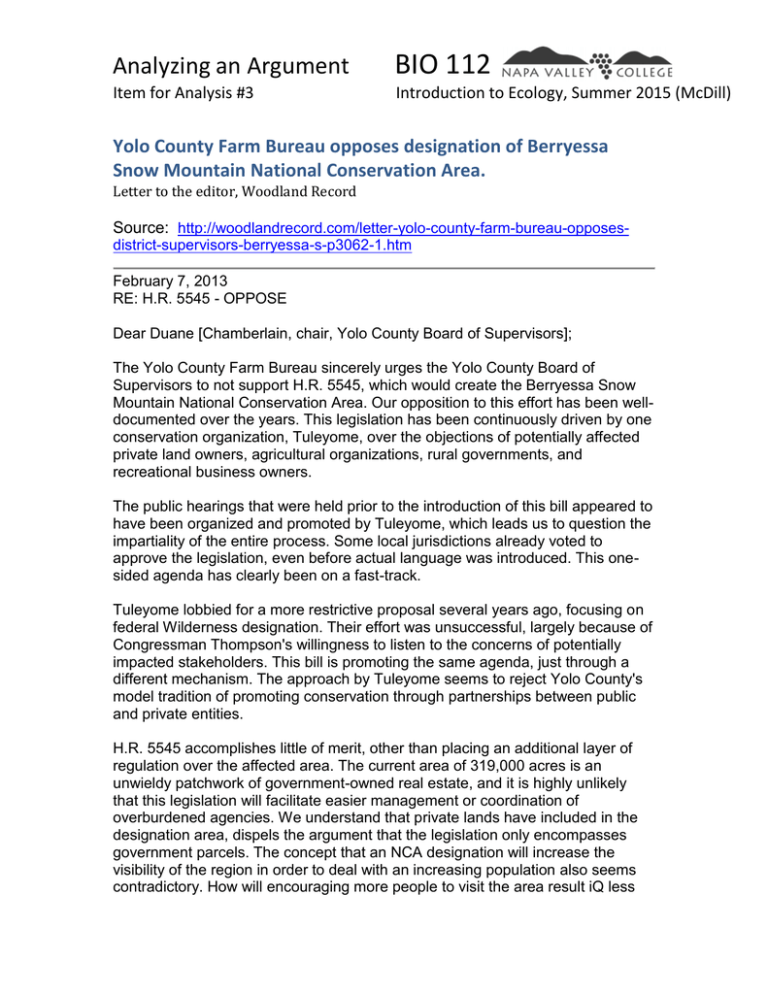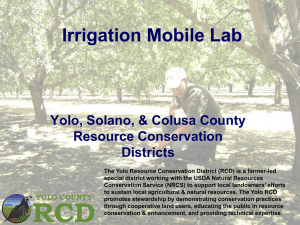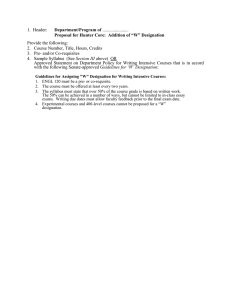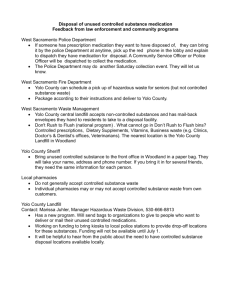BIO 112 Analyzing an Argument Snow Mountain National Conservation Area.
advertisement

Analyzing an Argument BIO 112 Item for Analysis #3 Introduction to Ecology, Summer 2015 (McDill) Yolo County Farm Bureau opposes designation of Berryessa Snow Mountain National Conservation Area. Letter to the editor, Woodland Record Source: http://woodlandrecord.com/letter-yolo-county-farm-bureau-opposesdistrict-supervisors-berryessa-s-p3062-1.htm February 7, 2013 RE: H.R. 5545 - OPPOSE Dear Duane [Chamberlain, chair, Yolo County Board of Supervisors]; The Yolo County Farm Bureau sincerely urges the Yolo County Board of Supervisors to not support H.R. 5545, which would create the Berryessa Snow Mountain National Conservation Area. Our opposition to this effort has been welldocumented over the years. This legislation has been continuously driven by one conservation organization, Tuleyome, over the objections of potentially affected private land owners, agricultural organizations, rural governments, and recreational business owners. The public hearings that were held prior to the introduction of this bill appeared to have been organized and promoted by Tuleyome, which leads us to question the impartiality of the entire process. Some local jurisdictions already voted to approve the legislation, even before actual language was introduced. This onesided agenda has clearly been on a fast-track. Tuleyome lobbied for a more restrictive proposal several years ago, focusing on federal Wilderness designation. Their effort was unsuccessful, largely because of Congressman Thompson's willingness to listen to the concerns of potentially impacted stakeholders. This bill is promoting the same agenda, just through a different mechanism. The approach by Tuleyome seems to reject Yolo County's model tradition of promoting conservation through partnerships between public and private entities. H.R. 5545 accomplishes little of merit, other than placing an additional layer of regulation over the affected area. The current area of 319,000 acres is an unwieldy patchwork of government-owned real estate, and it is highly unlikely that this legislation will facilitate easier management or coordination of overburdened agencies. We understand that private lands have included in the designation area, dispels the argument that the legislation only encompasses government parcels. The concept that an NCA designation will increase the visibility of the region in order to deal with an increasing population also seems contradictory. How will encouraging more people to visit the area result iQ less Analyzing an Argument BIO 112 Item for Analysis #3 Introduction to Ecology, Summer 2015 (McDill) impact to sensitive areas? An NCA designation cannot guarantee that there will be additional resources to deal with these human impacts. The proposed boundary lines of the conservation area have shifted substantially, after northern counties voiced their opposition. If Tuleyome really wanted a blanket conservation approach, why wasn't the east side of the Capay Valley included in the proposal? Perhaps it's simply easier to override the concerns of private landowners than it is the Wintun Tribe. One extremely troubling aspect of H.R. 5545 is that the final map of the actual boundary lines won't even be submitted until two years after its passage. One of our greatest concerns is the advisory council that this legislation will create. Most of the appointees are from individual counties' supervisorial boards, and the four citizen appointments fall under the discretion of the Secretary of the Interior, a highly partisan cabinet member. These meetings will likely be held during normal business hours, as is the case with the Blue Ridge Berryessa Natural Conservation Area Partnership, making it cumbersome for anyone but paid government employees or environmental activists to attend. The large geographical area, combined with the frequent turnover of government officials may also prohibit consistent participation on the council. Furthermore, since the advisory council cannot supersede the authority (we hope) of local, state, and federal government jurisdictions, the reason for its existence seems pointless. In a letter sent to Farm Bureau, dated March 20, 2009, Tuleyome referenced its involvement in the stakeholder committee of the BLM Bear Creek Unit (formerly Payne Ranch). Specifically, they touted their partnership with a highly respected rancher on using grazing to manage invasive species. Our understanding is that the grazing requirements they imposed became so restrictive, that the rancher was ultimately forced to abandon his lease. Is this the kind of "partnership" that will take place on other BLM grazing allotments, once Tuleyome has their sympathizers secured on the advisory council? We believe the advisory council is the primary motivation behind Tuleyome's effort to create the designation, and their ultimate goal is to have greater control over how these federal lands are managed. The question of seeking compromise on this legislation is [moot]. How do you compromise on something you adamantly oppose? Our members do not desire this designation in any shape or form, and we encourage you to reconsider the introduction of this bill. Barring that reconsideration, we will vigorously oppose all efforts to pass it. Sincerely, Eric Paulsen President, Yolo County Farm Bureau – Analyzing an Argument BIO 112 Item for Analysis #3 Introduction to Ecology, Summer 2015 (McDill) Editor's note: See the Snow Mountain Staff Report prepared by Don Saylor, Yolo County Supervisor, District 2, who wrote a letter to all members of the board stating, "I recommend that we adopt the attached resolution in support of designation of 319,300 acres of Federal land and interests in Federal land within Napa, Lake, Mendocino and Yolo Counties as the Berryessa Snow Mountain National Conservation Area, as depicted on the attached map." See map above.




